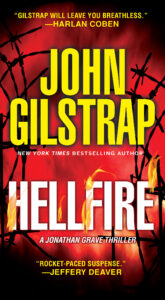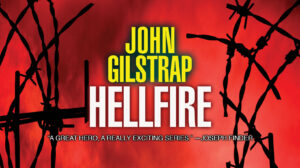As I read Reavis Wortham’s excellent post regarding titles and covers last Saturday, my first thought was, Hey, I’ve got a different squint on such matters. I think that’s what my post will be about on Wednesday!
My second thought was, Wait. I already wrote that post.
And, as luck would have it, on the day when I should be writing new material for this post, I’m swamped with Life Stuff and don’t have time to pen a whole new post. So, here we go with a post that first appeared on TKZ on November 4, 2020:
Whoever coined the trope that you can’t judge a book by its cover had to have been an academic. Certainly, the trope-coiner was not a reader of novels. Yes, it is true that some great novels come encased in ugly wrappers, but few of them find a broad readership.
What follows is based on zero research and even less science, but it reflects quite a few decades of personal observation.
People buy books in steps.
First, they have to know to look for it. This is the unicorn hair in the mix. I don’t know what drives me to look for a book. Certainly, there’s word of mouth, and I read a lot of books for blurbs, but I don’t remember the last time I went into a bookstore blind–without a target I was looking for–and scoured the shelves, hoping to be attracted to a cover. I don’t think I’ve ever done that in the virtual world, where online bookstores are not, in my opinion, very browsable.
Next, there has to be an instant attraction. Perhaps it’s the author’s name—which highlights the importance of “branding”. But that instant attraction is just that—instant. It’s fleeting. There and gone. This is where the cover comes in, highlighting the reason that genres exist in the first place. The title is important here, too. A thriller has to look and sound like a thriller. Ditto a romance or horror novel. In that brief second of instant attraction, the artwork makes a connection and causes the reader to move to the next step . . .
They read the plot description. In just a few words, the pressure is on to pull the reader into the story. To make them gamble their hard-earned money that the ride you’re going to provide is worth the money. How do they make their final decision?
They read the first pages. Yesterday, PJ Parrish posted a terrific primer on the elements of a good opening. Here’s where that pays off. Boom! Decision made, one way or the other. There’s neither the time nor the real estate to flub the opening and make it better later.
So, where is the cynicism?
Okay, here it is: The covers and titles needn’t have much to do with the actual plot of the book. They work together to accomplish their jobs in a glance, and then they are forgotten. They work in tandem to convince a potential reader to take a chance, and if you, as the writer, do your job to entertain, no one will notice. Some examples from my own work:
 Hellfire is the Jonathan Grave book that hit the stands back in July. What does Hellfire even mean? The story is about two kids who are kidnapped to keep their mom from revealing a terrorist plot after she has been arrested. The word itself–Hellfire–is an oblique reference to an air-to-surface missile system. And it sounds cool. It positions the book properly in the minds of readers who generally enjoy the types of books I write.
Hellfire is the Jonathan Grave book that hit the stands back in July. What does Hellfire even mean? The story is about two kids who are kidnapped to keep their mom from revealing a terrorist plot after she has been arrested. The word itself–Hellfire–is an oblique reference to an air-to-surface missile system. And it sounds cool. It positions the book properly in the minds of readers who generally enjoy the types of books I write.
 The red cover makes it distinctive on the shelf–unless or until red becomes the cover du jour for the current crop of cover designers. It also lends itself well as a Facebook cover image. But if you really look at the image and its various elements, it could be for a reprint of All’s Quiet On The Western Front, or it could be a story about Satan.
The red cover makes it distinctive on the shelf–unless or until red becomes the cover du jour for the current crop of cover designers. It also lends itself well as a Facebook cover image. But if you really look at the image and its various elements, it could be for a reprint of All’s Quiet On The Western Front, or it could be a story about Satan.
Other examples from my oeuvre (today is Pretend-I-Know-French Day): The second book in my Jonathan Grave series is Hostage Zero. It’s the title that broke the series out, and the phrase means nothing. None of the hostages are numbered, and none of them launch a plague, as in “patient zero”. It just sounded cool, and that’s why we went with it. The cover of Friendly Fire features the White House, yet neither the president nor his team are involved in the story. What we wanted to do is establish the book and its author as being “inside Washington”.
My point here is that storytelling and marketing are entirely different skillsets, with only distantly related goals. As an author, my job is to entertain my readers by giving them a helluva ride. To get that chance, I need to convince them (trick them?) into picking out my book from among all the others on the shelf.
Your turn, TKZers. Do you have any tricks you’re willing to share about how you convince readers to take the plunge?

Along with a professionally created cover that is on genre (or cross-genre, in the case of my Empowered series), I lean heavily on the book description to get the reader to buy or at least sample my books. The opening couple of sentences I bold, since this is the “hook” for the description, such as these examples from two of my novels:
“The world says those possessing superpowers are either heroes or villains. But what if you’re both?”—Empowered: Agent.
“Brand-new librarian Meg Booker is just supposed to be checking out books.”
Instead, it’s the patrons who are being checked out—permanently.”—A Shush Before Dying.
There’s an arc to the book description and I like to end with another hook:
“To save her city, her family, and herself, Mat must become the last thing she ever wanted to be again: a criminal.” — Empowered: Agent
“But when there’s another death—and one of her friends is arrested –Meg has to unmask the real murderer before it’s too late.” — A Shush Before Dying.
I spend some time working on these, running them by other writers etc.
Love the first Shush one, Dale! That one line makes me want to read the book. Plus, the title rocks. Well done, my friend.
Thanks, Sue, much appreciated!
John, your cover rocks! Love the vibrant red.
As someone who struggles with marketing, your post helped reframe my thoughts. Thank you.
Thanks!
On an unrelated note, a friend on #BookTok recently reviewed HELLFIRE on TikTok. I can send you the video link if you want to watch it. Let me know.
That would be great, thanks@
(what happened to all the other comments???)
We’re trying to figure that out, Harald. A WordPress glitch, apparently.